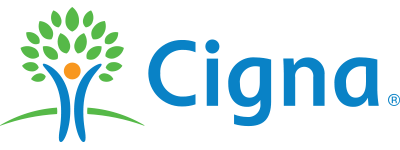Ketamine is approved for treatment-resistant depression, but how safe is ketamine therapy really?
A recent 2023 study on the Future of Mental Health examined the opinions and experiences with ketamine therapy, surveying 2,000 adults. Researchers found that 55% of those taking ketamine therapy accidentally or purposely took more than the recommended dose. One in five individuals also admitted to using ketamine for the purpose of treating anxiety, depression, or other mental health problems.
While people may view ketamine as being less dangerous than other substances, this isn’t the case when it’s misused. Ketamine can be extremely dangerous, and it is possible to become dependent on it. When this happens, the severity of ketamine withdrawals can make it difficult to quit. However, recovery is always possible with the right support.
Wolf Creek Recovery sees firsthand how substances like ketamine can be easily misused for self-medication purposes. The intention is often innocent—to simply feel better—but it can lead to a host of problems down the line, including ketamine use disorder. As an Arizona drug and alcohol rehab center, we offer comprehensive treatment for ketamine addiction and other substance use disorders. Let’s learn more about what causes ketamine withdrawal, the signs and symptoms to watch for, and the steps to take toward treatment.
Ketamine Withdrawals
Ketamine is a dissociative anesthetic originally developed in the 1960s for use in surgery and emergency medicine. It works by blocking NMDA receptors in the brain, which play a role in learning, memory, and pain processing. While ketamine is still used in medical settings to manage severe pain, it has gained widespread attention for its therapeutic benefits. However, not everyone realizes that ketamine can lead to consequences like tolerance and dependence. When this happens, it’s extremely difficult to quit without support.
What Is Ketamine Withdrawal?
Ketamine withdrawal refers to the physical, cognitive, and emotional symptoms that can occur when someone who has been using ketamine regularly reduces their dose or stops altogether. It’s more likely to occur in people who have been using ketamine frequently or in high doses, as their body has built up tolerance.
Because ketamine is a dissociative anesthetic that impacts dopamine, glutamate, and other neurotransmitters, chronic exposure can condition the brain and body to its presence. When the substance is removed, these systems rebound, creating significant distress. However, there are safe, effective ways to manage ketamine withdrawal symptoms and prepare the brain and body for recovery.
What Causes Withdrawal to Happen?
Ketamine withdrawals happen because of neurobiological changes in the brain and body. First, ketamine blocks NMDA receptors in the brain. Over time, the brain adapts by increasing the number or sensitivity of these receptors. Therefore, when ketamine use stops, the system becomes hyperactive, leading to symptoms like agitation, restlessness, and sensory disturbances.
Second, ketamine increases levels of dopamine and alters glutamate transmission, both of which are crucial for mood, motivation, and reward. After time, the brain learns to rely on ketamine for these boosts. When the substance is gone, dopamine levels drop, resulting in low mood, cravings, and loss of pleasure.
Third, chronic ketamine use dulls CNS activity. As ketamine levels drop, the body may experience rebound excitation, which can cause symptoms like sweating, increased heart rate, and insomnia. Lastly, the effects of ketamine can cause psychological dependence, especially for people who are using the substance to escape pain caused by anxiety, depression, or trauma.

Dependence vs Addiction: Why They Aren’t the Same Concepts
Even though the terms “dependence” and “addiction” are often used interchangeably, they are two different concepts, especially when discussing ketamine. Dependence refers to the body’s adaptation to a substance. With regular ketamine use, the brain and nervous system adjust to its presence, leading to withdrawal symptoms if the substance is stopped. However, a person can be dependent on ketamine without experiencing a loss of control.
Addiction, on the other hand, is a chronic brain disorder involving continued substance use despite harmful consequences. Key features include a loss of control and cravings and obsessions. People who have ketamine use disorder often use the substance to cope with physical or emotional pain. When they try to quit, the withdrawal symptoms become so uncomfortable, they often return to use. This is what causes the cycle to continue.
Ketamine Withdrawal Symptoms
Physical withdrawal symptoms:
- Fatigue or low energy
- Tremors or shakiness
- Sweating or chills
- Headaches
- Nausea or appetite loss
- Muscle aches
- Rapid heart rate
Psychological and cognitive symptoms:
- Anxiety or panic attacks
- Irritability or agitation
- Depression
- Intense cravings
- Confusion or brain fog
- Difficulty concentrating
- Mood swings
Sleep disturbances:
- Insomnia
- Vivid dreams or nightmares
- Restlessness
Emotional effects:
- Inability to feel pleasure
- Low motivation
- Emotional numbness
- Social withdrawal
What Is the Timeline for Ketamine Withdrawal?
Ketamine withdrawals follow a timeline, though there may be some differences depending on the person’s usage patterns, overall health, and whether other substances were used. While ketamine withdrawal isn’t typically as intense as alcohol or opioid withdrawal, it can still be psychologically challenging. Here is what to expect.
In the first 6-72 hours from the last use, early withdrawal symptoms set in. They are mostly physical in nature and include restlessness, insomnia, nausea, headache, and cravings. On days 2-4, the peak symptoms begin and include fatigue, insomnia, brain fog, loss of motivation, and vivid dreams or nightmares. After a week or so, peak symptoms subside, though it’s normal to experience emotional numbness, low mood, ongoing sleep disturbances, and cravings.
There is the potential for protracted withdrawal, which can last 2-4 weeks or longer. Symptoms include lingering depression or anxiety, lack of pleasure, low energy and focus, and cravings. Practicing self-care, participating in therapy, and spending time doing activities you once enjoyed are all helpful in managing protracted withdrawal symptoms.
Ketamine Detox
Ketamine detox is when the body eliminates ketamine from its systems. The emotional and psychological effects of ketamine withdrawal can be especially challenging, especially in people who use the substance frequently or in heavy doses. Depending on the severity of use and the individual’s health status, ketamine detox may be done in an inpatient drug rehab Prescott or outpatient setting. Both options offer structured support, clinical monitoring, and access to therapy and medication.
While there are no FDA-approved medications specifically for ketamine withdrawal, symptoms can be effectively managed with anti-anxiety meds, sleep aids, therapy and counseling, nutritional support, hydration, and rest. Most people recover within a week or two, though detox is just the first step in treating ketamine use disorder.

Where Can I Find the Best Treatment for Ketamine Use Disorder in Prescott, AZ?
Ketamine addiction rehab may include individual therapy (CBT, group counseling, support groups), medication management for underlying conditions, and lifestyle changes. For many individuals, choosing a residential or IOP care program is ideal, as it provides everything needed for a full recovery. These programs also provide care teams that include clinicians, therapists, and support staff. These professionals ensure clients are seeing the full benefits from their treatments. With this type of comprehensive support, making a full recovery from ketamine use disorder is entirely possible.
Wolf Creek Recovery provides comprehensive care for substance use disorders, including ketamine use disorder. We offer a supportive, compassionate environment where individuals can safely explore the root cause of their substance use and build lasting recovery through evidence-based therapies and individualized care. Our outdoor therapy program also provides unique opportunities to spend time in nature and develop new skills. Contact our team today at 833-732-8202 to learn more about our programs. Build a life you love.
FAQs About Ketamine Withdrawals
What is ketamine withdrawal?
Ketamine withdrawal refers to the physical, psychological, and emotional symptoms that happen when a person who has been using ketamine regularly suddenly stops their intake.
What are the most common ketamine withdrawal symptoms?
Withdrawal from ketamine is generally more psychological than physical, though it can still be highly distressing. The most common symptoms are anxiety, depression, irritability, mood swings, cravings, brain fog, and anhedonia (inability to feel pleasure).
Can you die from ketamine withdrawal?
Generally, ketamine withdrawal is not life-threatening, but there are still indirect risks that can occur. The main concerns with ketamine withdrawal are suicidal thoughts, risky behavior from psychological distress, and relapse and overdose.









